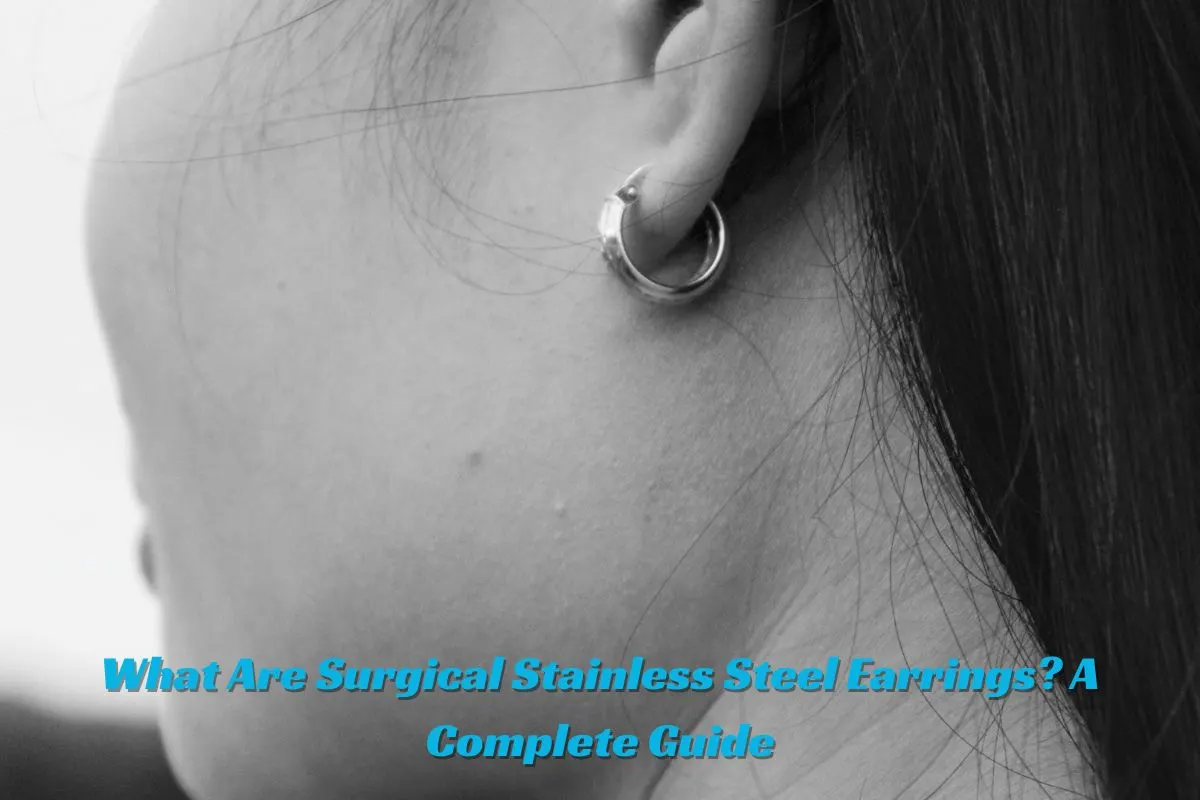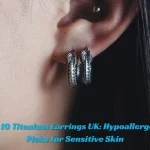Looking for safe, stylish, and reliable earrings? Surgical stainless steel earrings are often a go-to for people with sensitive skin, new piercings, or live an active lifestyle. But what makes them special—and are they truly hypoallergenic? This in-depth guide explores everything you need to know: from metal science and expert insights to best-use tips and style ideas.
What Is Surgical Stainless Steel?
Surgical stainless steel (SSS) refers to specific high-quality alloys like 316L and 316LVM, designed to resist corrosion and stabilize nickel release.
-
316L / 316LVM: Low-carbon grades compliant with medical standards (ASTM F138, ISO 5832-1).
-
Scratches and tarnish: Typically resistant, with a clean, shiny finish.
-
Nickel content: Present but tightly bound—doesn’t easily leach if properly passivated.
As explained by Dr. Emma Craythorne, Consultant Dermatologist in the UK:
“While often considered hypoallergenic, not all surgical stainless steel is the same. For piercings, it’s essential to look for grades like 316L or 316LVM, which have extremely low nickel release rates, making them suitable for most sensitive individuals.”
This insight clarifies that not all SSS is equal—only high-grade alloys should qualify.
Benefits and Limitations of SSS Earrings
1. Corrosion Resistance and Cleanliness
Thanks to chromium, SSS forms a passive film that keeps the underlying metal safe. Prof. Alan D. Miller, a metallurgy expert, illuminates:
“The key to surgical stainless steel’s hypoallergenic property lies in its chromium content, which forms a passive, protective layer on the surface, preventing the underlying nickel (if present) from leaching into the skin.”
This protective layer is pivotal for safety and hygiene.
2. Cost-Effective, Everyday Jewelry
Chloe Smith, a UK jewelry designer, highlights accessibility:
“Surgical stainless steel offers a wide range of aesthetic possibilities, from classic silver tones to PVD-coated colors. Its affordability allows designers to create stylish and accessible options for a broad market.”
Thus, SSS earrings offer style and safety without the cost of precious metals.
3. Suitable for Healed Piercings, with Some Caveats
Fiona Williams, a professional UK body piercer, advises:
“For healed piercings, 316L surgical stainless steel can be an excellent, cost-effective choice. It’s robust, easy to clean, and resists corrosion well, making it a practical option for everyday wear.”
However, this holds only for healed piercings—not fresh ones.
4. Not Entirely Nickel-Free
Some highly sensitive individuals may still react, even to 316L-grade SSS. Dr. Jennifer Lee, a UK-based allergist, cautions:
“While generally safe, individuals with extreme nickel sensitivity might still react to surgical stainless steel, even low-carbon grades. In such cases, implant-grade titanium remains the safest bet.”
This underscores the need to consider personal allergy thresholds.
Industry Perspectives & Healing Use Cases
Standards Matter
The Association of Professional Piercers (APP) (and the UKAPP) only approve SSS that meets ASTM F138 or ISO 5832-1 for jewelry in new piercings en.wikipedia.org. Standards ensure safety and reduce allergic risk.
Case Studies from UK Piercers
Leading piercing studios in London, Manchester, and Glasgow report that clients with healed piercings wear high-grade SSS earrings without complications. They praise the metal’s hygiene, strength, and polish.
Nickel Allergy & Safety Science
Research Highlights
Studies like Spiewak R. et al. (2011) have demonstrated that low-grade costume earrings can release nickel and cause dermatitis.
In contrast, chromium-coated 316L steel greatly limits nickel leach, significantly lowering allergic potential. That said, with very sensitive people, even trace exposure may trigger reactions.
Titanium vs. SSS: A Comparison
Titanium (e.g., implant-grade Ti-6Al-4V) is completely nickel-free and often considered the gold standard. While more expensive, it’s the safest option for new piercings and extreme sensitivities.
Styles, Care Tips & Best Practices
Popular Surgical Steel Earring Types
-
Flat-back studs: excellent for comfort and side sleeping
-
Huggies & hoops: sturdy, snag-resistant design
-
PVD-coated earrings: offer color stability without added chemicals
Caring for Your SSS Earrings
-
Clean weekly with warm, soapy water and a soft cloth.
-
Avoid harsh chemicals like bleach or chlorine.
-
Inspect for wear, scratches, or loose backs.
-
Store separately to prevent scratching or tarnishing.
️ Choosing Surgical Stainless Steel Earrings in the UK
What to Look For
-
Labels like “316L surgical stainless steel” or “316LVM”
-
Certifications like ASTM F138 or ISO 5832-1
-
Reputable sellers: online boutiques vs. high-street chains
-
Customer reviews that mention comfort, skin reaction history, and longevity
Ideal User Scenarios
-
Healed piercings: Safe, durable, and stylish
-
Busy lifestyles: Resistant to sweat and tarnish
-
Budget-conscious shoppers: Offers performance at a lower cost
Not Recommended For
-
Initial piercings: Titanium or niobium are safer
-
Extreme nickel sensitivity: Test with small studs first
❓ FAQs About Surgical Stainless Steel Earrings
-
Can I wear SSS earrings in new piercings?
Not recommended. Always opt for titanium or niobium for initial healing. -
Are surgical steel earrings nickel-free?
No—contains nickel, but the chromium layer limits release. Safe for most, but not all. -
Can I swim or shower with them?
Yes—SSS is highly corrosion-resistant, but avoid harsh chemicals. -
Will they irritate sensitive skin?
If properly graded and passivated, usually not. But highly sensitive individuals may still react. -
How to test nickel sensitivity before buying?
Try a patch test or start with titanium studs. Look for itching or redness as warning signs.
Conclusion
Surgical stainless steel earrings are a practical, fashionable, and affordable option for those with healed piercings or looking for durable everyday wear. Just be sure to choose trusted alloys (316L/316LVM) and reputable brands.
If you suffer from extreme nickel allergy or need jewelry for new piercings, consider implant‑grade titanium or niobium as safer alternatives. When chosen and worn correctly, surgical stainless steel offers a balance of style, affordability, and reduced allergy risk—making it a smart choice for your jewelry box.




